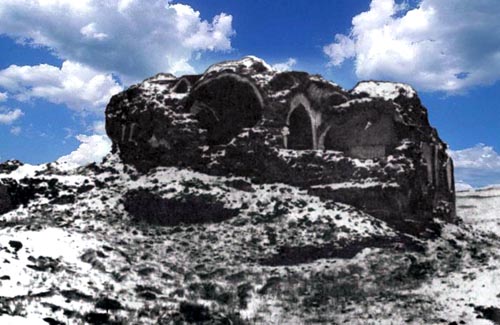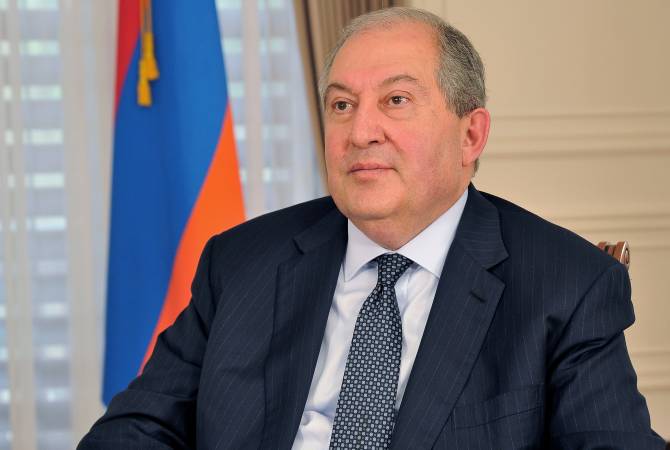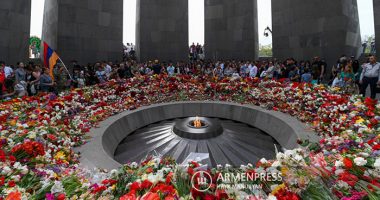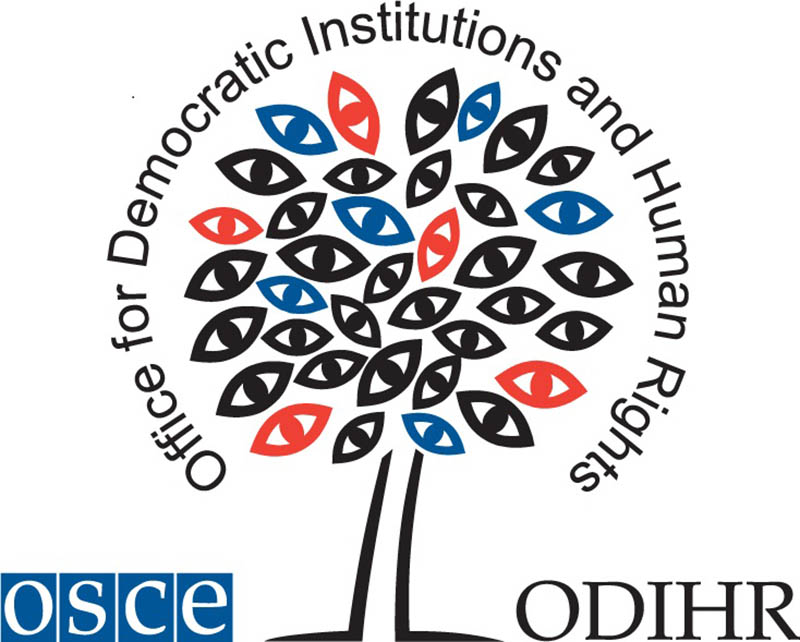YEREVAN (Panorama.am) — In the 27th issue for the year 1900 of the project “The Collection of Materials to Describe the Terrain and Tribes in the Caucasus,” Jagin district two-year school inspector A. Ter-Markarov published an article, dedicated to one of the pearls of the early Medieval Armenian architecture, the 5th century monastery Karmir Vank in the territory of Nakhijevan uyezd of Erivan Governorate.
Constructed of red cut stone in early 5th century, the monastery Karmir Vank is situated on a small hill on the left bank of river Araks, not far from a village of the same name.
A folktale says Karmir Vank (“Red Monastery”) received its name after “Vardan’s war” (the battle of Avarayr), when all the wounded were taken there from the battlefield. “The yard and all the stairs taking into the monastery were painted with the blood of the wounded,” the author describes. However, he believes the red color of the stone used to build the monastery is a more credible reason for the name.
Notably, the monastery is called Astapat by some due to the village Astapat 3 versts from it. The monastery of St. Vardan or Astapat St. Vardan is situated not far from that village (1 verst = 1.067 km). The name of the village originated in the 5th century, when St. Vardan was wounded and killed in war with the Persians under Shapuh’s reign. His body was taken to the left bank of the river Araks, and wrapped in a shroud in the place the monastery stands now. Hence the name of the place, Astapat: “ast” means “here” and “pat” – “wrap”. Later the Saint’s body was taken to the Mamikonyans’ crypt in Mush.
Karmir Vank monastery was built in the Archdeacon Protomartyr St. Stephen’s honor not far from the ancient town of Khram, now ruined. There are no ancient dwellings or settlements around the monastery.
In order to picture the whole beauty of the monastery, the author describes thoroughly its architectural peculiarities and the “signs” centuries left on it to mark the events connected with the reconstructions, alterations, its priors’ biography and dates of their deaths. Biblical scenes and characters are also carved in the walls of the monastery.
“The outside walls are smooth and embellished with inscriptions. The Northern wall is especially notable in two places carrying carvings showing the Baptism of Jesus Christ, St. Stefan with a cross in his hands, and an image of the monastery and two crosses of an arshin in front of him (= 0.711 m, – ed.). Another cross is carved in the Western outside wall on four 12 vershok-long and 8 vershok-wide marble stones set in it (1 vershok = 4.45 cm, – ed.). One of them has an inscription about constructions in 1108, that is, 1658,” the author describes.
Above the doors taking into the church, on both sides, images of crosses and indications of different years can be noticed. One of them reads “summer, 426,” another “526,” the third “730,” the fourth “920” and the fifth “1139.” There are more dates carved in the walls inside the church, too. “These years denote the times of the construction of the monastery and the other buildings around it. One of the inscriptions reads 550 BC, that is, 1100,” the author writes.
Various pictures are also carved around the windows, in particular, those of St. Trinity, the Ascension of Our Lord, the Savior’s tortures and death, the Entry of the Most Holy Theotokos into the Temple, the Binding of Isaac and others. There are pictures and inscriptions in Armenian between the windows as well. Small pieces of glass of various colors are set in the windows; the Four Evangelists’ pictures are carved a little below.
The archimandrite Jacob’s marble tomb, embellished with pictures of various animals and plants and Armenian inscriptions, is on the Southern side of the church.
There are six memorial headstones in the bell tower. Only one of them has its marble covering preserved, picturing a crozier, a two-headed snake, and a cross in the center with an epitaph inscribed on its sides. Some pieces of stone depicting lion can be seen among the remains of the dome of the bell tower, which was destroyed of an earthquake in 1840. There is no cemetery around the church itself, but there are two outside its gates.
There is also a church based on a cliff. Describing the decoration of the church, as well as the images and inscriptions on its internal walls, the author points out that the Saints’ portraits are painted without mentioning their names.
There is a Gospel at church written on parchment in 654, that is, 1205 AD (it is currently kept in Etchmiadzin Cathedral, – ed.). The Armenian historian Arakel Davrizhetsi (dead in 1118, that is, 1663) wrote about that Gospel in his works.
Another handwritten Gospel with a silver cross on its cover reading “St. Cross is kept in Karmir Vank monastery in honor of Theotokos, there is a memory to the archimandrite Jacob and his parents Hovhannes and Khanabeki. Summer 1121 (1671).” It is unknown to what century the handwritten Gospel belongs to, according to the author.
According to the information, many Saints’ relics are kept in the monastery. Particularly, Archdeacon Protomartyr St. Stephen’s relics are kept in a gilded silver reliquary, and those of St. Aristaces, the son of St. Gregory, Armenia’s illuminator, are kept in silver and gilded reliquary with pieces of cross. St. John the Baptist and St. Virgin Barbara’s relics are also kept here.
Ter-Markarov also writes about a cut-stone pool, where the adults, who wished to adopt the Christian faith, were baptized in the ancient times. It also served as a spring for the abode during the Persian attacks.
The monastery is kept at the expense of the devotees attending it, and some dozens of pieces of land.
Remarkably, according to V. A. Schnirelmann, St. Stephen’s monastery of 7th century, known as “Red Monastery” (“Karmir Vank”) in the town of Astapat, Nakhijevan, “is a significant monument of the Armenian Medieval architecture.”
“The Collection of Materials to Describe the Terrain and Tribes in the Caucasus” is a large-scale publication of narrative sources carried out by the management of the Caucasus Educational Okrug in 1881-1908. It includes researches and description of the history, life, and ethnographic characteristics of the peoples inhabiting the Caucasus region of the Russian Empire.










